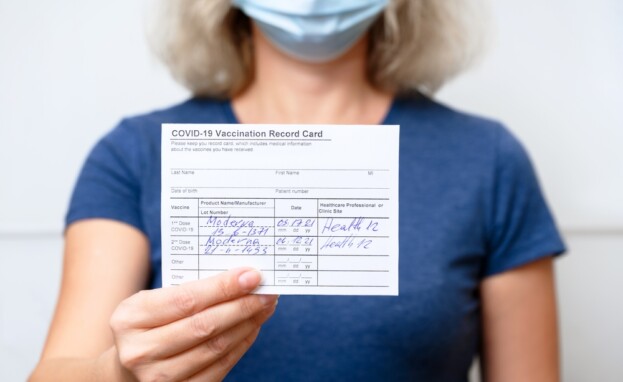UPDATE: On December 18, 2021, OSHA announced that employers will now have until January 10, 2022 to comply with the majority of the requirements of the OSHA ETS, and until February 10, 2022 to comply with the ETS’s testing requirements, so long as an employer is exercising reasonable, good faith efforts to come into compliance with the ETS. Thus the December 6, 2021 and January 4, 2022 deadlines referenced in this article are no longer in effect.
The much-anticipated OSHA Emergency Temporary Standard (ETS) requiring employers with 100 or more employees to mandate their employees be vaccinated or submit to testing was released on Thursday, November 4.
OSHA’s website has a page dedicated to the new ETS, which can be found here. The OSHA page also has a summary of the key requirements of the ETS, found here. The key requirements of the ETS are as follows:
The ETS applies to all employers that have a total of at least 100 employees firm or corporate-wide, and requires employers to:
- Develop, implement, and enforce a mandatory COVID-19 vaccination policy, with an exception for employers that instead establish, implement, and enforce a policy allowing employees who are not fully vaccinated to elect to undergo weekly COVID-19 testing and wear a face covering at the workplace.
- Determine the vaccination status of each employee, obtain acceptable proof of vaccination, maintain records of each employee’s vaccination status, and maintain a roster of each employee’s vaccination status.
- Provide employees reasonable time, including up to four hours of paid time, to receive each vaccination dose, and reasonable time and paid sick leave to recover from side effects experienced following each dose.
- Ensure that each employee who is not fully vaccinated is tested for COVID-19 at least weekly (if in the workplace at least once a week) or within 7 days before returning to work (if away from the workplace for a week or longer).
- Require employees to:
- Promptly provide notice when they receive a positive COVID-19 test or are diagnosed with COVID-19;
- Immediately remove any employee from the workplace, regardless of vaccination status, who received a positive COVID-19 test or is diagnosed with COVID-19 by a licensed healthcare provider; and
- Keep removed employees out of the workplace until they meet criteria for returning to work.
- Ensure that unvaccinated employees are wearing a mask indoors.
- Provide employees the following in a language and at a literacy level the employees understand:
- Information about the requirements of the ETS and workplace policies and procedures established to implement the ETS;
- The CDC document “Key Things to Know About COVID-19 Vaccines”;
- Information about protections against retaliation and discrimination; and
- Information about laws that provide for criminal penalties for knowingly supplying false statements or documentation.
Additionally, the ETS:
- Does not require employers to pay for any costs associated with testing, unless otherwise required by law, including for employees who are legally entitled to reasonable accommodations.
- Does not apply to employees who do not report to a workplace where other individuals such as coworkers or customers are present, employees while they are working from home, or employees who work exclusively outdoors.
There are also Frequently Asked Questions from OSHA on the new ETS, which can be found here. The OSHA ETS will be officially published tomorrow, and will also be effective tomorrow. Based on this, employees must be fully vaccinated by January 4, 2022, or submit to testing. All other requirements must be met by December 5, 2021.
If you have any questions on the OSHA ETS’s application to your organization or how to comply with the OSHA ETS’s requirements, Lerch Early’s employment attorneys are ready to help.


